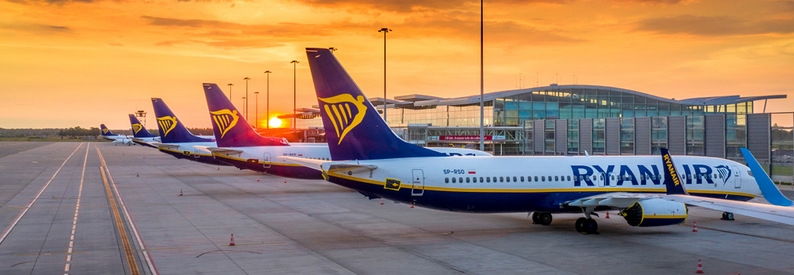Ryanair Lowers Passenger Targets Due to Boeing Delays

Ryanair, Europe’s leading low-cost carrier, has adjusted its passenger forecasts for 2026, attributing the change to ongoing delays in Boeing aircraft deliveries. The Irish budget airline announced on January 27, 2025, that it will not achieve its ambitious goal of transporting 210 million passengers by 2026 as initially planned.
The primary reason for this downward revision is the delayed production of Boeing’s 737-8200 ‘Gamechanger’ aircraft. Ryanair officials stated, “While B737 production is recovering from Boeing’s strike in late 2024, we no longer expect Boeing to deliver sufficient aircraft ahead of summer 2025 to facilitate the fiscal year of 2026 traffic growth to 210 million passengers.” This setback highlights the significant impact that manufacturing delays can have on airline expansion plans.
Ryanair anticipates the arrival of the remaining 29 Boeing 737-8200 aircraft by March 2026. These deliveries are crucial for the airline to recover the delayed traffic growth. Additionally, Boeing is expected to certify the MAX 10 variant by late 2025, which Ryanair believes will enable the delivery of the first 15 MAX 10s by spring 2027. This certification is a critical step for Ryanair to continue expanding its fleet and meeting future demand.
In response to the limited capacity growth, Ryanair is redirecting its expansion efforts towards specific regions and airports in Poland, Sweden, and Italy. These areas are actively promoting growth by reducing aviation taxes and encouraging increased air traffic. By focusing on these markets, Ryanair aims to sustain its low-fare, profitable growth trajectory despite the challenges posed by aircraft delivery delays.
Moreover, Ryanair has highlighted that European short-haul capacity will remain constrained in 2025. This constraint is largely due to ongoing maintenance issues, specifically Pratt & Whitney engine repairs, which many of Europe’s Airbus operators are currently addressing. The limited availability of aircraft capacity is expected to support Ryanair’s strategy of achieving a significant increase in passenger numbers.
Despite the setbacks with Boeing, Ryanair reported a robust Profit After Tax (PAT) of €149 million for the third quarter of 2024. This figure represents a substantial increase from the €15 million PAT recorded in the same quarter the previous year. The surge in profitability is attributed to a 9% rise in traffic, bringing passenger numbers to 45 million for the quarter.
Looking ahead, Ryanair remains optimistic about reaching nearly 200 million passengers in the fiscal year 2025, provided there are no further adverse developments related to Boeing’s delivery delays. The airline has cautiously projected its PAT for fiscal year 2025 to range between €1.55 billion and €1.61 billion. However, Ryanair acknowledges that this outlook is contingent on avoiding several external risks, including potential conflicts in Ukraine and the Middle East, additional Boeing delivery delays, and air traffic control (ATC) challenges such as mismanagement and short staffing in Europe.
Ryanair’s strategic adjustments underscore the airline’s resilience in navigating industry disruptions. By reallocating resources to growth-promoting regions and maintaining a focus on profitability, Ryanair aims to continue its leadership in the low-cost carrier market. The airline’s ability to adapt to manufacturing delays and external challenges will be pivotal in achieving its long-term growth objectives.
While Ryanair has had to lower its passenger forecast for 2026 due to Boeing’s delayed aircraft deliveries, the airline remains committed to expanding its operations and enhancing profitability. By leveraging opportunities in specific European markets and managing external risks effectively, Ryanair is poised to sustain its growth and maintain its position as a dominant player in the competitive aviation industry.
Related News : https://suspicious-zhukovsky.67-21-117-18.plesk.page/?s=Ryanair
